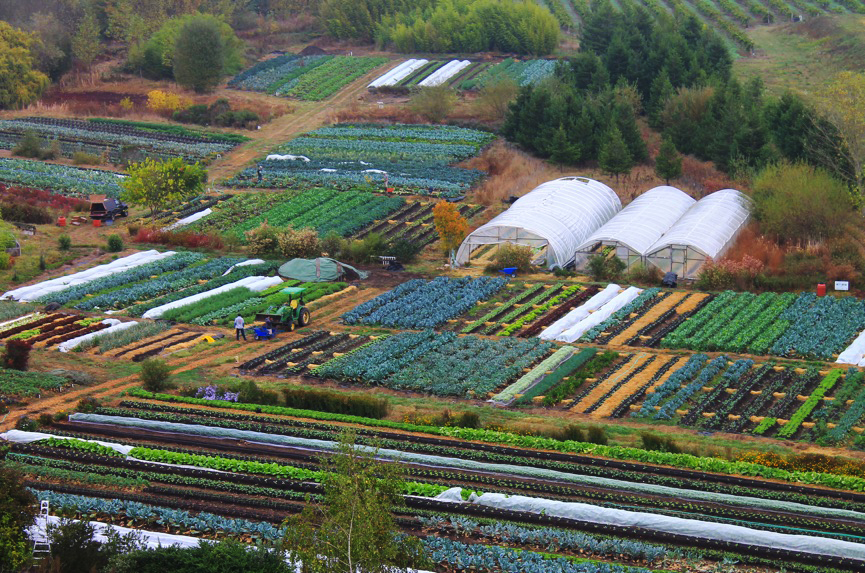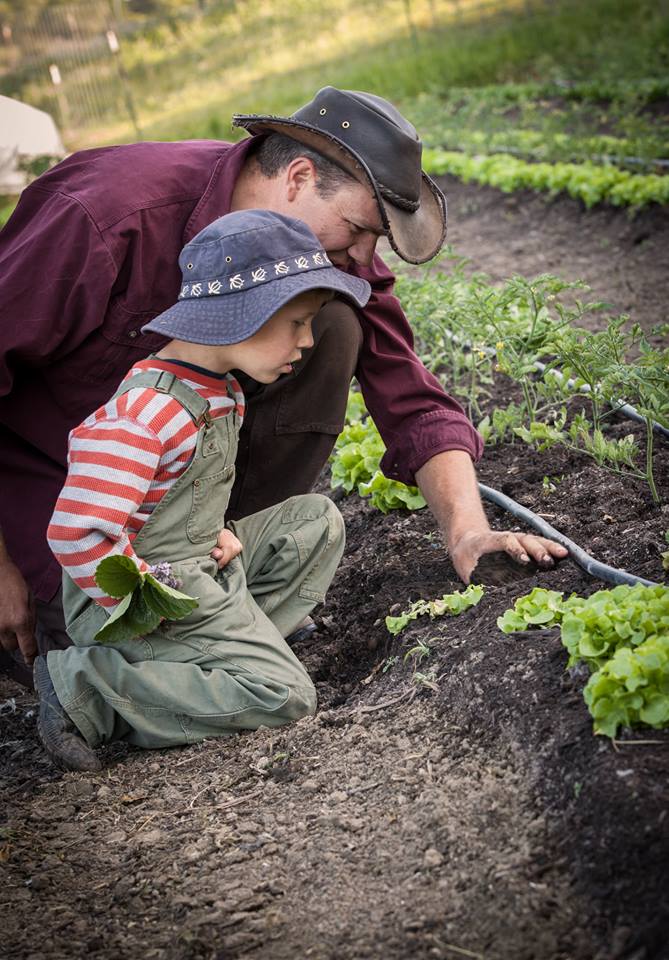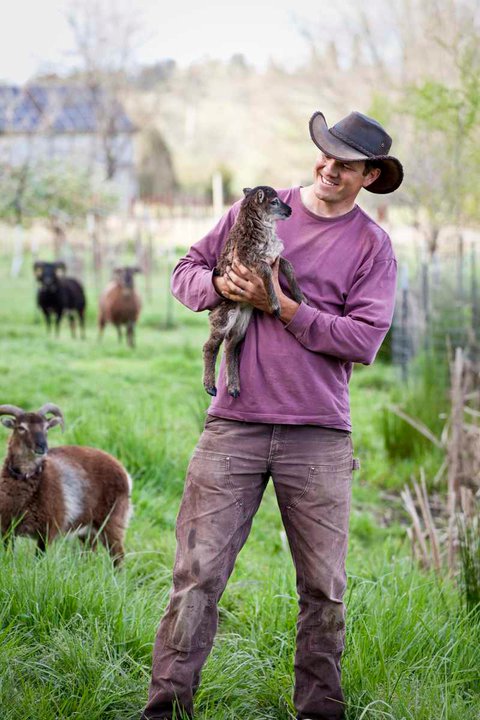
Preserving California Soil
Hidden in the hills of Sonoma’s wine country is a treasure trove of rich soil where bees pollinate, ladybugs charm, and praying mantis’ fold their forelimbs, nodding to the true protector of the realm, Paul Kaiser.
Six years ago Kaiser began no-till farming in this pastoral region of California– a hand labored method that aims to nurture the soil back to its original state, before human beings arrived, leaving it rich in organic matter and crawling with earthworms and potential.
This method, that even the most crunchy of organic farmers have yet to discover, asks that we abandon the romantic idea of a John Deere tractor traversing acres of land. What it offers instead is a far dreamier– and more importantly, attainable— future for our planet.
Six to nine percent organic matter, a greater water-holding capacity, greater water efficiency, and dramatically-increased microbiology are all just a few benefits stemming from no-till farming, which yields more crops and creates greater revenue. Sticking your hand wrist-deep into the soil at Kaiser’s Singing Frogs Farm makes the extra effort seem worthy of commencing a no-till revolution. The soil is rich and healthy, as nature intended.
While there is traction behind the “no-till movement” with new farmers across the U.S., most farmers who have history in the business are hesitant to transition.
“Farming is such a passionate subject— it’s a full livelihood experience. Every ounce of your body and your day is devoted to moving your crops along. To simply come in and say, ‘lets change how you do things’ is very [hard]. Asking someone to go from a tillage-based system to no-till is throwing the entire system of farming out the window and starting from scratch,” Kaiser tells me. “When we have existing farmers come to our farm, they fall on the floor and they are wide eyed. [Then] they give all kinds of excuses to why it would never work for them,” he adds.
Mechanical tillage is a key factor behind the Dust Bowl of the 1930s– an earth-damaging process that devastated agriculture at the time. Today we are experiencing even hotter weather, even less rain, and a great drought in the same region, and yet we are still degrading the soil beneath our feet. Is California destined to re-commit the errors of this unsavory history?
Mechanical tilling was invented to loosen and aerate the top layer of soil in order to allow farmers greater ease at planting crops and destroying weeds. It’s efficient– in theory– but as a result of this process, nutrients are released into the atmosphere (and ultimately lost). As nitrogen mingles with oxygen it creates Nitrous Oxide, or N2O, which is commonly known as a Green House Gas. When nutrient runoff enters the ocean it causes ocean acidification, also known as eutrophication, which is often responsible for local fish kills and the degradation of choral reefs on a global scale.
Not only are conventional tilling methods harming the soil, oxygen, and ocean, but all of these methods also call for a dramatic increase of herbicide usage– which ultimately harms people.
Herbicide usage results in the endangerment of microorganisms, honey-bees, pollinators, and other insects. That is why Singing Frogs Farm stays away from organic sprays of any kind— no pesticides, no herbicides, and no fungicides. “If you look at the warning label of organically-approved sprays, they [recommend] that you wear some type of protective gear, wash your hands after, and oh by the way it’s harmful to honey-bees and other pollinators [they read]. Oh! Lovely!” Kaiser remarks sarcastically.
“Testing has shown flat-out that when you use insecticides they kill off [your beneficial pests] ubiquitously. That’s the pesticide treadmill that you hear of, which is [a process whereby] if you kill off your beneficial organisms by using organic sprays, then guess which ones come back faster? Pests come back much faster, so you have to spray again.”
Since many organic farmers still rely on some form of no-till as well as organic sprays, the devastating case for our ground nesting pollinators becomes more apparent. “95% of native pollinators are ground nesting, and ground nesting bees can’t survive the tillage that [happens] twice a year on organic farms. Organic farms actually have greater tillage than conventional farms, because conventional farms don’t till in the fall– so organic agriculture has actually increased the amount of tillage and that wipes out ground nesting native bees. The organic, or conventional sprays, [weaken] their immune system and strength of bee colonies,” Kaiser tells me soberly.
Singing Frogs Farm uses a fertilizer cocktail of oyster shell calcium, volcanic rock powder, and organic nitrogen. “A farm is essentially in the business of exporting nutrients off the property. You can’t do that forever without bringing something back onto the farm, so we [rely on] compost– but we also use organic fertilizers because minerals don’t come back to you in the form of compost very easily.”
The best way for the soil to gain minerals is through volcanic fallout, ash, or from floods. Kaiser laughs, “None of us want to have a volcanic fallout, so we do look at remineralization as a key ingredient to making sure things function well.”
Kaiser attributes his success to his non-farming background. Prior to purchasing the farm, eight years ago, he specialized in rehabilitating degraded landscapes. This required that he take into account economic viability while simultaneously tending to the ecological health of the land. He and his wife decided they would approach the farm with the same mentality, creating hedgerows and a perennial habitat. “We did windbreaks and all of that. The tillage part I had never done—I had only done agroforestry (in which trees or shrubs are grown around or among crops or pastureland)— but with the tillage I realized I was wiping out native bees that were ground nesting, I was wiping out songbird nests, and I was wiping out fungi and earth worms. Why am I doing this?” he said.
“So we tried to figure out how to pull back on the tillage because it didn’t seem to mesh with our ecologically-approached plan management. We backed off to walk-behind tillers, and we kept backing off until we figured out how to do it without any tillage at all.”
No-till farming enables Kaiser to run his drip system for 20-25 minutes, twice a week, conserving fifty percent more water this year than than the farm conserved in 2014. Singing Frogs Farm is down to ten percent of their original water usage, with the same if not better productivity. Kaiser is proud to share his success story, but more importantly, he’s eager to share with the world that California is a wonderful place to grow food: we just need to change how we grow it.
“We should have many more small scale, no-till, farms in urban and coastal communities,” he adds. “The quarter million dollars of food that we sell every year is sold within a 12-mile radius of our farm, and that is a good thing. If we are going to scale up, like people want us to do, we are going to [need] 100 farms like ours for every small city.”
We have the ability to replicate this model, moving food production closer to population centers and reducing the resources we need to create food. We also have the ability to grow 140 varieties of vegetables while saving pollinators, like Kaiser– but the change takes time, effort, and research.
It all begins with transforming the soil, which is so often starved of nutrients, into something teaming with life and rich in organic matter. It might seem like a revolutionary concept, but no-till farming can get us there.





































